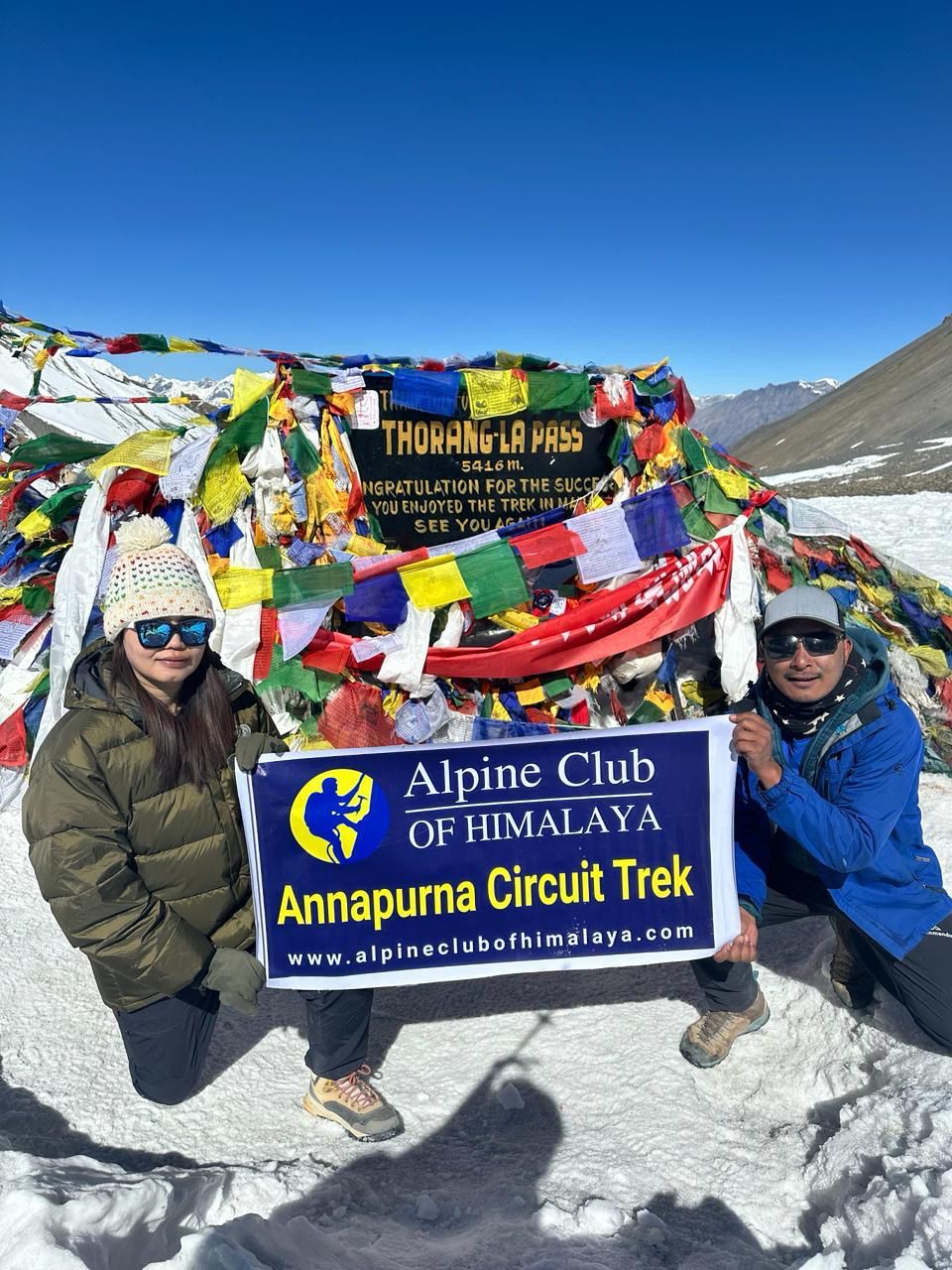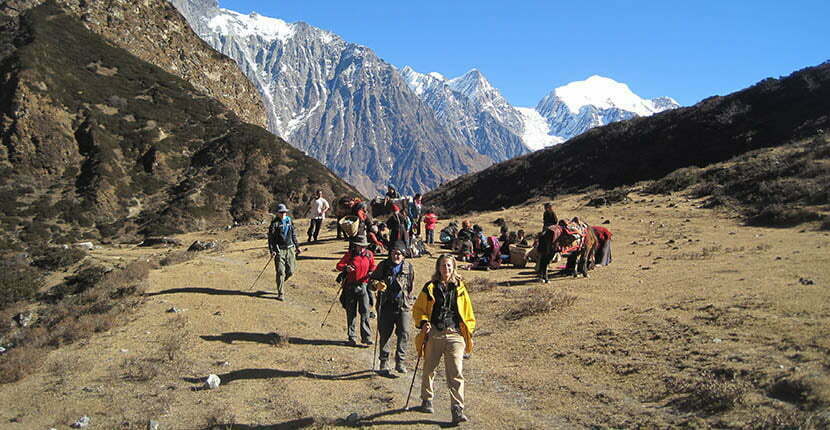Pikey Peak Trek is a newly discovered trekking route in the Everest region. The isolated and secluded trails are less crowded with the buzz of tourism. Provides a perfect chance to experience the raw and wild stories of the Everest region. This Pikey Peak Trek takes you to beautiful areas on Everest inhabited by Sherpa. Learning about their true culture and lifestyles. Apart from this, the trail takes you across hilltops, ridge sections, and high cliffs providing panoramic views of Mount Everest and other neighboring peaks of the region.
Overview
The Pikey Peak Trek offers travelers to explore the rugged landscapes of the Everest region. Along with magnificent views of the Himalayan ranges from Dhaulagiri, Makalu, Everest, Lhotse, Kanchenjunga, and endless other mountain peaks. Traversing across lush woodlands to high alpine grounds the trek takes you across changing landscapes and microclimates.
The trek starts with a long drive from Kathmandu toward the tiny settlement of Dhap. From Dhap your trek officially starts towards Japre, a settlement perched above a deep valley with splendid views of Everest and Numbur Himal. Next, head towards Pikey Base Camp traversing across the grassy ridge, a beautiful forested trail covered with varieties of rhododendrons. And also view the Mahalangur range. Following day head to the summit of Pikey Peak at an elevation of 4,065 meters. From the top witness splendid panoramic views of the Himalayas from Annapurna to Kanchenjunga. After that traversing through the steep sections of the deep wilderness, you will reach the settlement of Loding.
From Loding proceed towards Junbesi. A traditional Sherpa village nestled at an altitude of 2675 meters/ 8776 feet, a cradle of Sherpa culture and architecture. Along the way visit the Thubtenchoeling Monastery and learn about the insights of the monks. Next head towards the Taksindu trail and visit apple, and peach orchards and the ancient Taksindu Monastery built-in 1946. From Taksindu head towards Phaplu on route to explore the Chiwong Gompa established in 1923. Eventually, catch a flight from Phaplu towards Kathmandu.
Our Pikey Peak Trek is designed for both experienced as well as beginner trekkers. This trek is basically a moderate-level short trekking destination in the Everest region. If you have a time limitation and still want to explore Everest region, join us Alpine Club of Himalaya.
Meals and drinking water:
Everest Region Trek is one of the most facilitated trekking destinations in the country, providing basic to luxury services.
In this trial, you will be provided with a variety of cuisine to choose from. Nepali, Tibetan, Indian, western as well as continental meals. Region has small tea houses to luxury hotels the facilities, provided are basic to grandeur according to your budget.
Similarly, drinking water is accessible with natural water supplies which are untreated. So direct use of the water is not recommended, you may refill boiling water or cold filter water from any of the teahouses. However, if you buy a water purification tablet, chlorine drops, or utilize SODIS (sunlight assisted) filtration procedures for further assurance, saving money, and reducing plastic pollution.
Accommodation:
Accommodations are available in trekking lodges, teahouses, and several hotels all along the trail, providing basic, well-maintained, reasonably luxury 5-star ones with additional needs according to your budget. Tea houses on the trail vary in quality and price, depending on the amenities they feature.
The tea houses room has twin sharing beds and some basic furniture like a table or a chair. Normally, beds contain pillows and sheets and almost all tea houses provide extra blankets as it will be freezing at night. Usually, hot showers are available throughout the trek.
For trekkers who want to Camp, various campsites are available along the trail.
Best Time to Visit?
The best season for trekking to the Everest region is during autumn and spring, the months of September, October, November, March, April, and May.
During the autumn season, the months of September, October, and November the weather is clear with warm temperatures and the visibility is great. As the weather is mild it is very easy to get around the region.
The spring season of March, April, and May are also the best time to visit the Everest region. It markes the end of the winter, the spring season brings a change in the topography of the region and the destination comes to life with endless rows of different colored rhododendron, moss and orchid draped trees, colorful undergrowth stretching for miles and the snowy white mountains peaks on the backdrop of clear blue skies.
Monsoon season is not favorable for trekking as the weather gets harsh and it is hard to get around the country with frequent landslides and floods. So usually, monsoon season is avoided by trekkers.
In the winter season, the area receives a high amount of snowfall, covering most of the trail, and access is denied to most of the regions of Everest, making it impossible to trek.
Important Note:
Your safety is of paramount importance to us at the Alpine Club of Himalaya. We have the absolute authority to cancel the trip or change the itinerary, when deemed necessary or when we have reason to believe your safety is at stake. Weather conditions, the health condition of a group member, natural disasters, and such, can contribute to changes in the itinerary when traveling in remote mountainous regions. In these extreme situations, we kindly request that you offer your full co-operation to the trusted leader of the group appointed by the Alpine Club of Himalaya. However, we assure you that we will make every effort to keep to the above itinerary.
Overview
Accommodations:
We will be staying at Alpine Hotel Nepal in Kathmandu, Mount Kailash Resort in Pokhara, and at teahouses during the trek. All accommodations are on a twin-shared basis. A single supplement will be served on request and will cost an additional USD350. Alpine Club of Himalaya will arrange rooms with attached washrooms. However, teahouses in some places only have shared washing and toilet facilities. Also, note that single rooms are readily available in Kathmandu and the trekking regions at lower elevations but it might be difficult to find them at higher elevations.
Meals:
During the trek, you can enjoy Nepali, Tibetan, Indian as well as more common continental cuisines. Breakfast (only) will be provided during your stay in Kathmandu whereas all meals (breakfast, lunch, and dinner) will be available during the trek and climb. While trekking, breakfast will be taken in the same place we stay the night. Similar arrangements can also be arranged for dinner. Lunch will be taken en route to the next destination. During the climbing session, hygienic and freshly-cooked food will be provided. There will also be welcome and farewell dinners in Kathmandu.



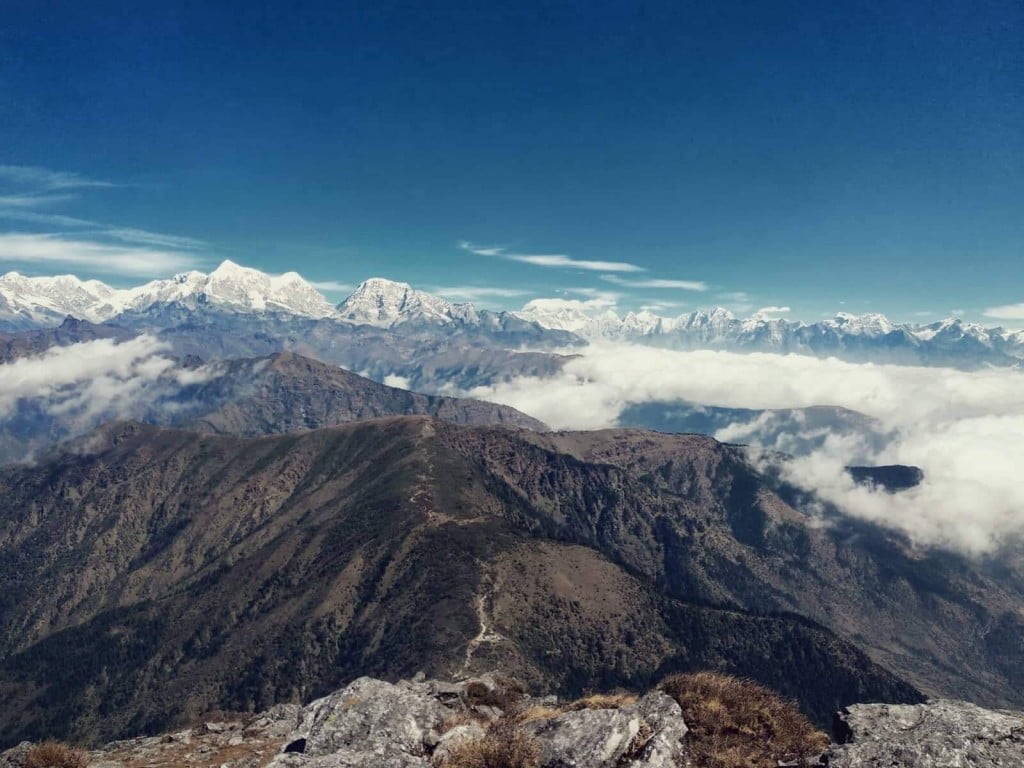
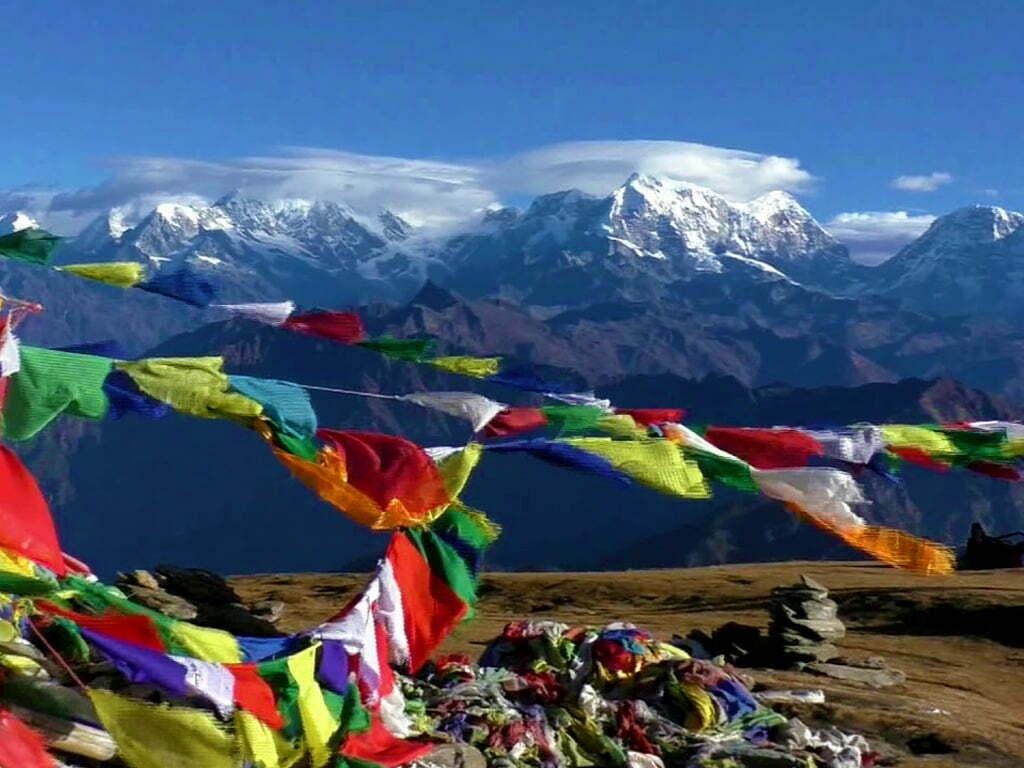

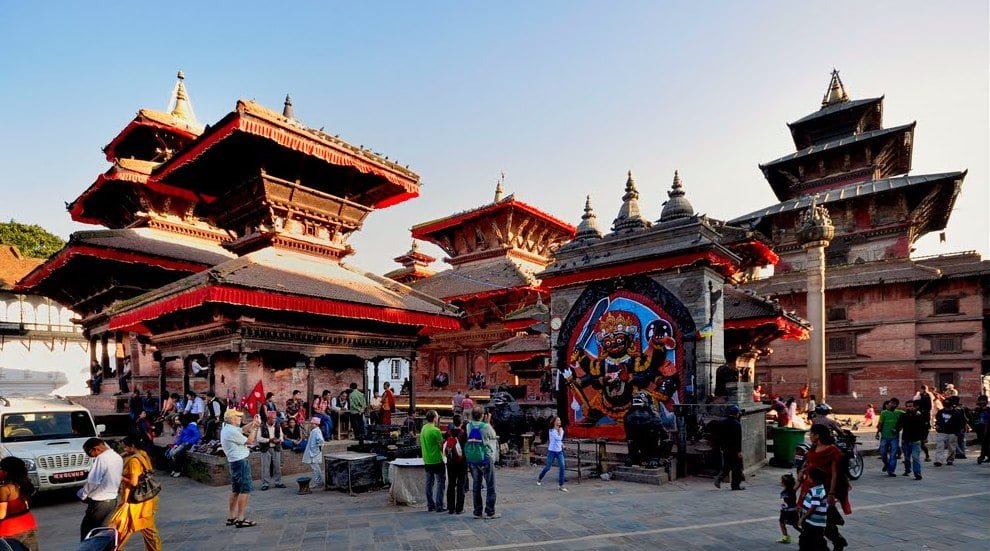 Kathmandu
Upon arrival at Tribhuvan International Airport in Kathmandu, you will be greeted by a representative from Alpine Club of Himalaya who will drop you off at our hotel. After checking in, you take a rest or stroll around the streets of Thamel, a tourist hub in Kathmandu. In the evening, join in for a welcome dinner hosted by the Alpine Club of Himalaya.
Maximum Altitude: 1400m
Meals: Welcome Dinner
Accommodation: Hotel in Kathmandu
Kathmandu
Upon arrival at Tribhuvan International Airport in Kathmandu, you will be greeted by a representative from Alpine Club of Himalaya who will drop you off at our hotel. After checking in, you take a rest or stroll around the streets of Thamel, a tourist hub in Kathmandu. In the evening, join in for a welcome dinner hosted by the Alpine Club of Himalaya.
Maximum Altitude: 1400m
Meals: Welcome Dinner
Accommodation: Hotel in Kathmandu  Kathmandu: Boudha Stupa
After breakfast, head on a guided tour of the valley towards various historical and spiritual attractions. Some of these landmarks are considered World Heritage Sites including the historic Durbar Square, the sacred Hindu temple of Pashupatinath, the famous ‘Monkey Temple’ (Swayambhunath), and the Buddhist shrine of Bouddhanath, the largest stupas in the world. In the afternoon join in for a short briefing regarding the trip with your trekking leader and other team members. Overnight in Kathmandu.
Maximum Altitude: 1400m
Meals: Breakfast, Lunch, and Dinner
Accommodation: Hotel in Kathmandu
Kathmandu: Boudha Stupa
After breakfast, head on a guided tour of the valley towards various historical and spiritual attractions. Some of these landmarks are considered World Heritage Sites including the historic Durbar Square, the sacred Hindu temple of Pashupatinath, the famous ‘Monkey Temple’ (Swayambhunath), and the Buddhist shrine of Bouddhanath, the largest stupas in the world. In the afternoon join in for a short briefing regarding the trip with your trekking leader and other team members. Overnight in Kathmandu.
Maximum Altitude: 1400m
Meals: Breakfast, Lunch, and Dinner
Accommodation: Hotel in Kathmandu 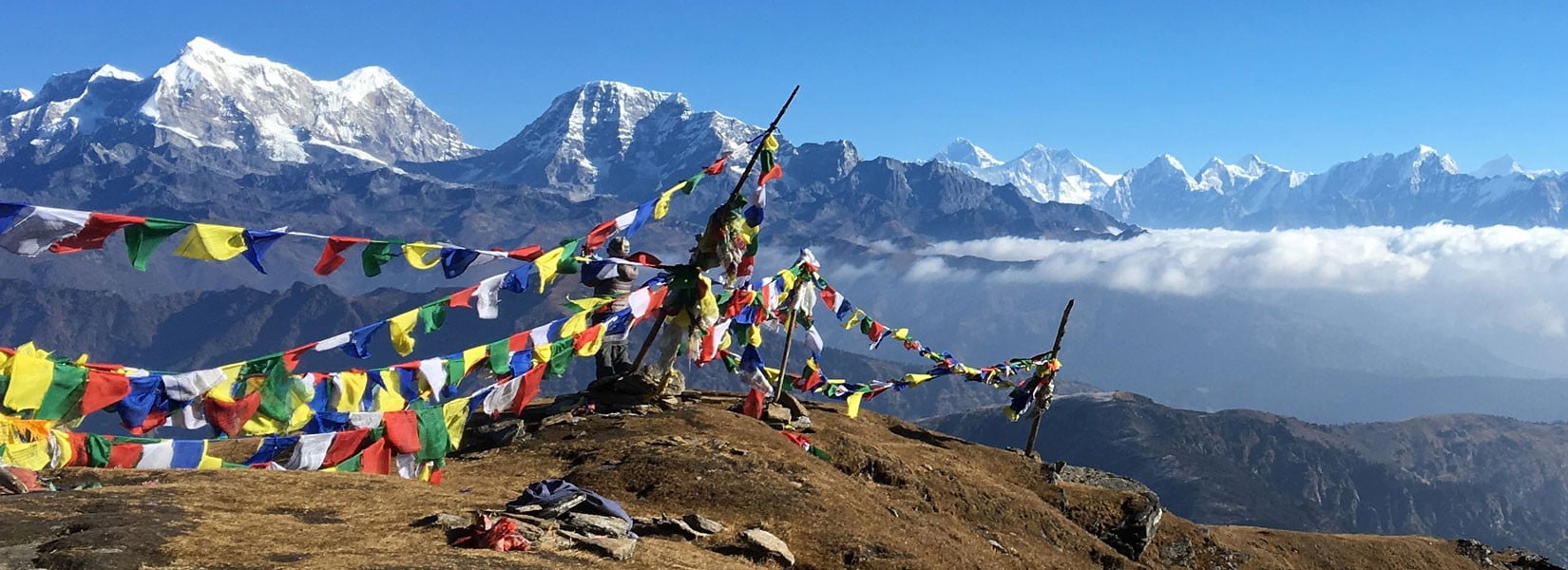 Pikey Peak
After an early breakfast, head towards the summit of Pikey Peak at an elevation of 4,065 meters. Apart from the altitude, the climb is non-technical, so take it slow and take frequent rest. The gradual climb takes you to the summit. From the top witness the splendid panoramic views of the Himalayas from Annapurna to Kanchenjunga. After soaking in the energy of the mountains head towards Pikey Base Camp.
Next, following the ridgeline start your trek, as you progress you will be traversing on flat grounds and eventually through lush woodlands to Jase Bhanjyang. From, Jase Bhanjyang traversing through the steep sections of the deep wilderness you will reach the settlement of Loding.
Maximum Altitude: 2515m
Duration: 3-4 hours
Meals: Breakfast, Lunch, and Dinner
Accommodation: Teahouse
Pikey Peak
After an early breakfast, head towards the summit of Pikey Peak at an elevation of 4,065 meters. Apart from the altitude, the climb is non-technical, so take it slow and take frequent rest. The gradual climb takes you to the summit. From the top witness the splendid panoramic views of the Himalayas from Annapurna to Kanchenjunga. After soaking in the energy of the mountains head towards Pikey Base Camp.
Next, following the ridgeline start your trek, as you progress you will be traversing on flat grounds and eventually through lush woodlands to Jase Bhanjyang. From, Jase Bhanjyang traversing through the steep sections of the deep wilderness you will reach the settlement of Loding.
Maximum Altitude: 2515m
Duration: 3-4 hours
Meals: Breakfast, Lunch, and Dinner
Accommodation: Teahouse 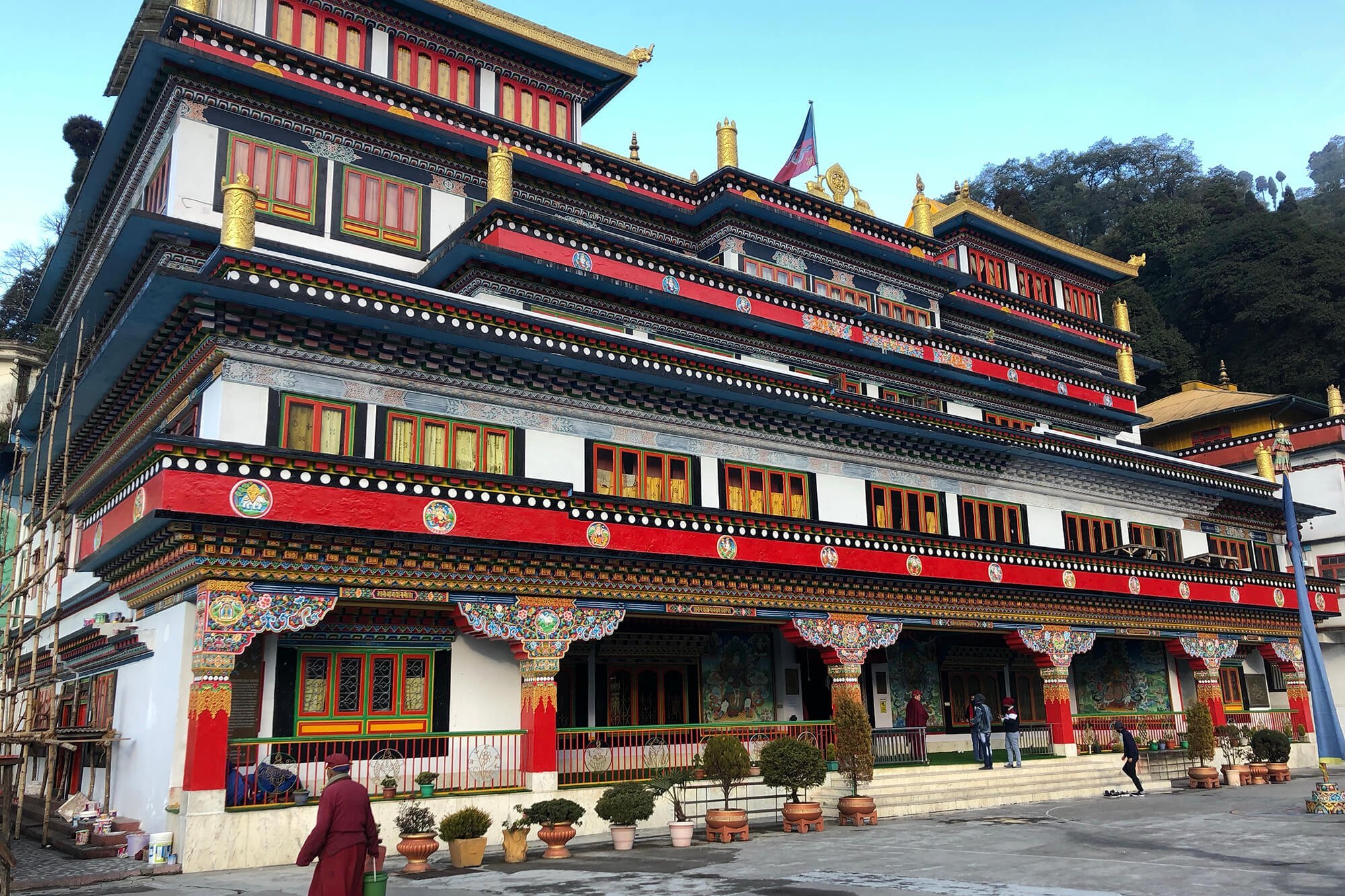 Thubtenchoeling Monastery
Today start your trek following a descending trail, on a ridge section to Jase Bhanjyang. From here there are several trails taking you towards Junbesi. You will be taking a shortcut trail that leaves the ridge and descends steeply through spectacular old-growth forest to Taktor. Along with this section witness grand views of the woodland covered with ferns and orchids. As you progress the trail joins the Everest Base Camp trail coming from Jiri.
From Taktor, after a couple of hours, trek you will eventually reach Junbesi. A traditional Sherpa village nestled at an altitude of 2675 meters/ 8776 feet, is the cradle of Sherpa culture and architecture. After a brief rest head out to explore the monasteries of the area and start friendly conversations with the monks and the locals getting an insight into their culture and lifestyle.
Maximum Altitude: 2675m
Duration: 3-4 hours
Meals: Breakfast, Lunch, and Dinner
Accommodation: Teahouse
Thubtenchoeling Monastery
Today start your trek following a descending trail, on a ridge section to Jase Bhanjyang. From here there are several trails taking you towards Junbesi. You will be taking a shortcut trail that leaves the ridge and descends steeply through spectacular old-growth forest to Taktor. Along with this section witness grand views of the woodland covered with ferns and orchids. As you progress the trail joins the Everest Base Camp trail coming from Jiri.
From Taktor, after a couple of hours, trek you will eventually reach Junbesi. A traditional Sherpa village nestled at an altitude of 2675 meters/ 8776 feet, is the cradle of Sherpa culture and architecture. After a brief rest head out to explore the monasteries of the area and start friendly conversations with the monks and the locals getting an insight into their culture and lifestyle.
Maximum Altitude: 2675m
Duration: 3-4 hours
Meals: Breakfast, Lunch, and Dinner
Accommodation: Teahouse 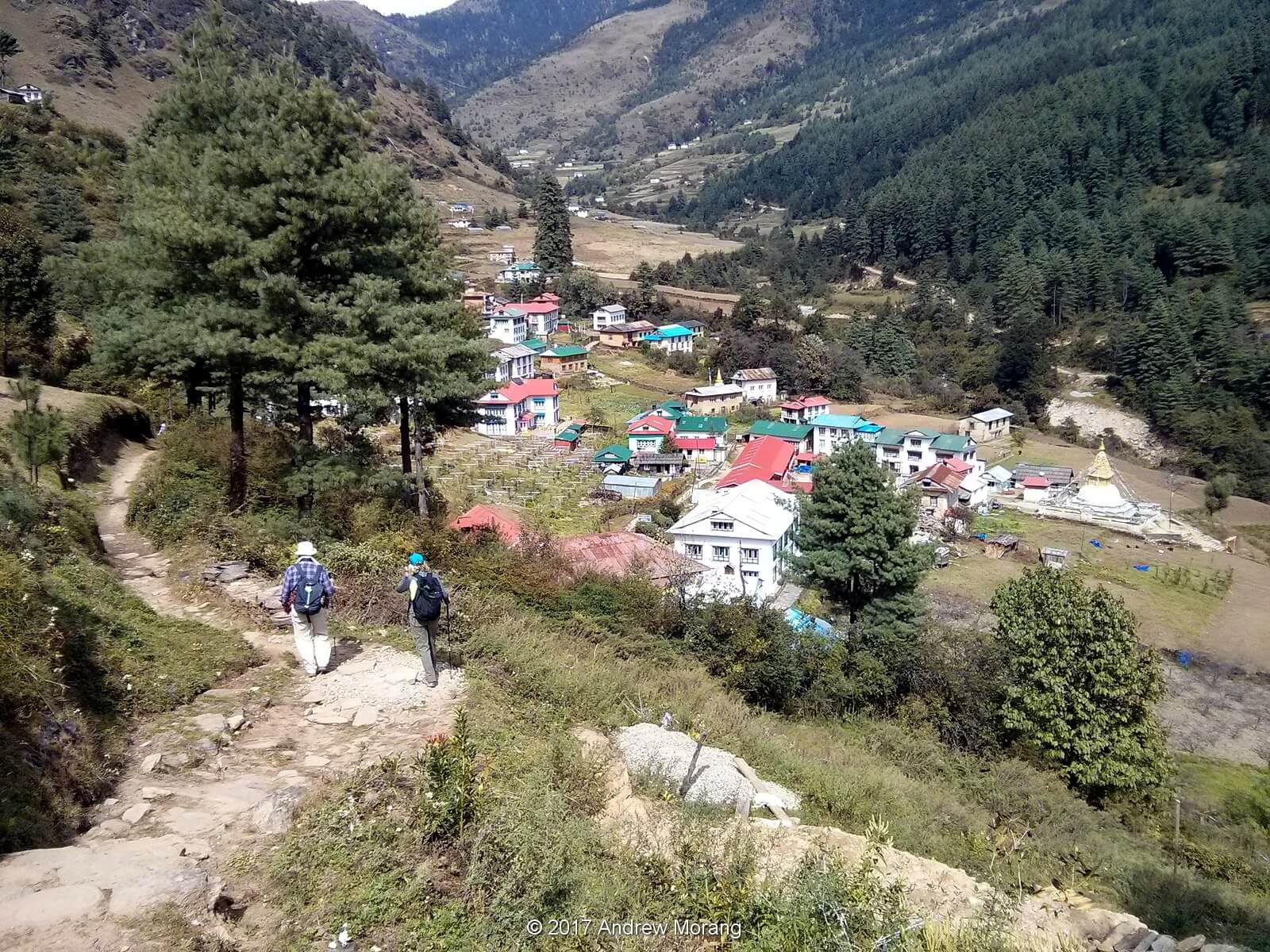 Junbesi
After breakfast, we will start our trek, towards the river basin after crossing the river climb through the forest up to Salung. From Salung witness grand views of Mount Everest (8848.86 meters/ 29,028 feet), Chamlang (7319 meters/ 2,4012 feet), Makalu (8481 meters/ 27,824 feet), and gorgeous views out across the valley to Chiwong Monastery and down towards Phaplu.
Next head towards the settlement of Ringmo, a region renowned for its apple, and peach orchards. Here try various apple cuisines of the region. After exploring the orchards, start the final leg of your trek. Traversing across an uphill section you will reach Taksindu La. From here witness the views of the Mahalangur range, after a brief descent you will reach Taksindu Monastery bbuiltin1946. After exploring the monastery head towards the tea house.
Maximum Altitude: 2842m
Duration: 5-6 hours
Meals: Breakfast, Lunch, and Dinner
Accommodation: Teahouse
Junbesi
After breakfast, we will start our trek, towards the river basin after crossing the river climb through the forest up to Salung. From Salung witness grand views of Mount Everest (8848.86 meters/ 29,028 feet), Chamlang (7319 meters/ 2,4012 feet), Makalu (8481 meters/ 27,824 feet), and gorgeous views out across the valley to Chiwong Monastery and down towards Phaplu.
Next head towards the settlement of Ringmo, a region renowned for its apple, and peach orchards. Here try various apple cuisines of the region. After exploring the orchards, start the final leg of your trek. Traversing across an uphill section you will reach Taksindu La. From here witness the views of the Mahalangur range, after a brief descent you will reach Taksindu Monastery bbuiltin1946. After exploring the monastery head towards the tea house.
Maximum Altitude: 2842m
Duration: 5-6 hours
Meals: Breakfast, Lunch, and Dinner
Accommodation: Teahouse 







